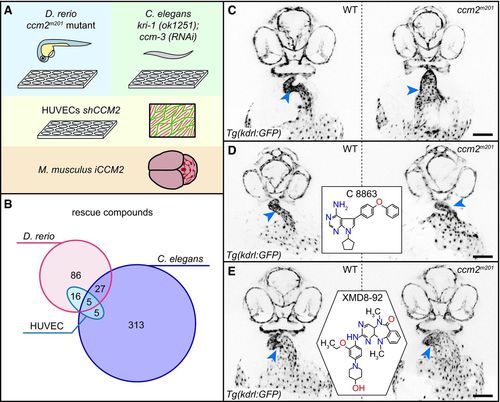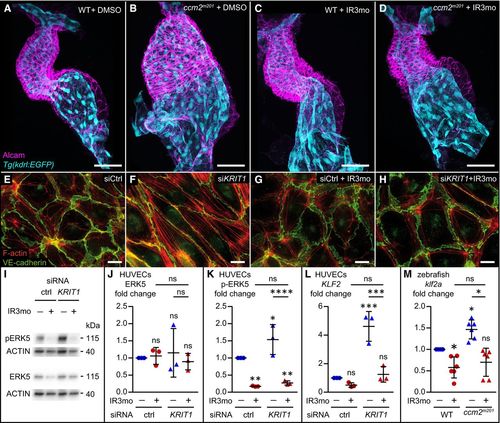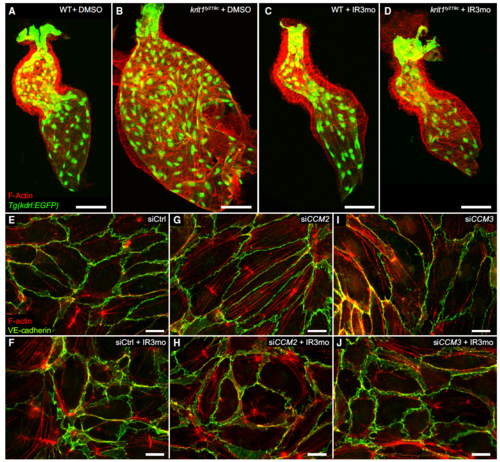- Title
-
Systematic pharmacological screens uncover novel pathways involved in cerebral cavernous malformations
- Authors
- Otten, C., Knox, J., Boulday, G., Eymery, M., Haniszewski, M., Neuenschwander, M., Radetzki, S., Vogt, I., Hähn, K., De Luca, C., Cardoso, C., Hamad, S., Igual Gil, C., Roy, P., Albiges-Rizo, C., Faurobert, E., von Kries, J.P., Campillos, M., Tournier-Lasserve, E., Derry, W.B., Abdelilah-Seyfried, S.
- Source
- Full text @ EMBO Mol. Med.
|
Small‐molecule drug screens identify compounds relevant for CCM
PHENOTYPE:
|
|
Indirubin‐3‐monoxime (IR3mo) rescues the CCM phenotype in zebrafish and HUVEC models
|
|
Indirubin-3-monoxime (IR3mo) rescues the CCM phenotype in krit1ty219c mutant zebrafish and CCM2- and CCM3-depleted HUVECs. Treatment with 5 lM IR3mo rescues the embryonic zebrafish krit1ty219c mutant ballooning heart phenotype. Shown are images of confocal z-scan projections of wild-type (WT) (A, C) and krit1ty219 mutant (B, D) zebrafish embryonic hearts at 48 hpf expressing the endothelial reporter Tg(kdrl:GFP)s843 (green) and counterstained for ACTIN (red). Scale bar is 50 lm. Treatment with 10 lM IR3mo for 48 h rescued the CCM phenotype in CCM2- or CCM3-depleted HUVECs. Shown are confocal images of HUVECs with labeled VE-cadherin (green) and F-ACTIN (red). Control siRNA-silenced (E, F), CCM2 siRNA-silenced (G, H), or CCM3 siRNA-silenced (I, J) HUVECs untreated (E, G, I) or treated (F, H, J) with IR3mo. Scale bar is 10 lm. PHENOTYPE:
|



